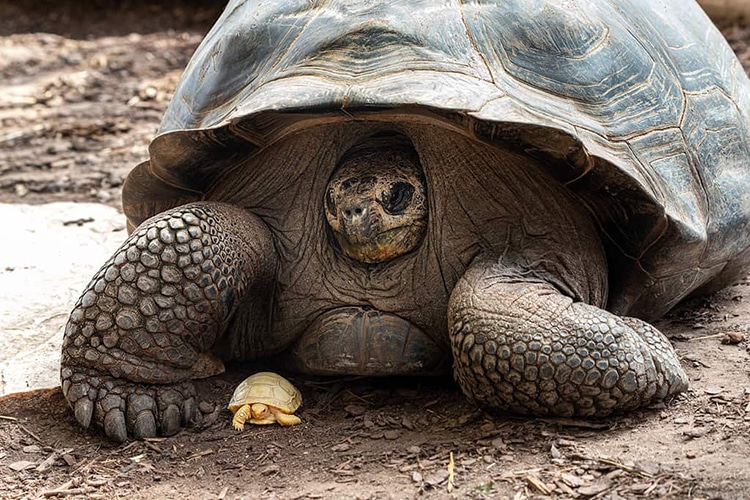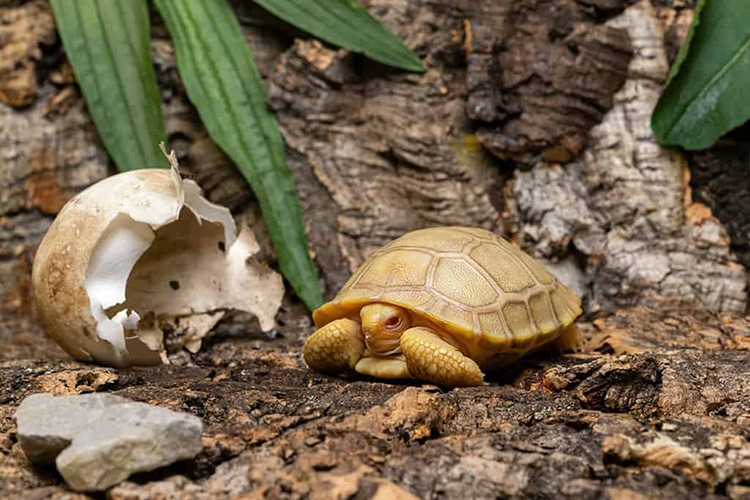Photo:Tropiquarium
The Galapagos giant tortoise (Chelonoidis niger) is an incredible species.
These living relics can weigh over 500 pounds and are difficult to breed.
Optimistic estimates put their numbers at10,000 to 15,000 tortoisesalive today in the wild.

Photo:Tropiquarium
Both weighed 1.8 ounces at birth.
They were whisked away to be warmed in an incubator for a month.
They have just now made their debut.

Photo:Tropiquarium
Only one of the two has albinism, a genetic condition which prevents the production of melanin.
We were surprised to discover an albino baby, zoo staff said in astatement.
None have been recorded in the wild either.

Photo:Tropiquarium
Zookeepers suspect albinism may appear in 1 in 100,000 tortoises, although this is speculative.
The gene is recessive, so tortoises may carry it without anyone knowing.
Two recessive genes must combine to appear visually.
The babies are a brilliant addition to the zoo, but they are remarkable for many reasons.
The Galapagos giant tortoise is an aggressive mate, with much biting involved.
When babies are born in the wild, the males and females are initially indistinguishable.
However, warmer conditions during incubation produce females, while cooler temperatures produce males.
These young creatures also mysteriously vanish for the first five years of their life.
It is surmised they shelter under debris on their island home, hiding from predators.
Around five years old, they suddenly emerge, too big for hawks to carry away.
The birth of the baby turtles is, therefore, to be celebrated.